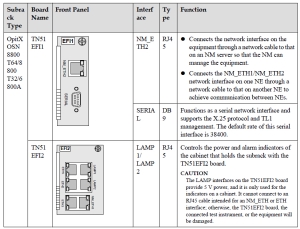Application
The SXCSA is a super cross-connect and synchronous timing board apply to Huawei MSTP OSN3500. The SXCSA provides service grooming and clock input/output functions in the OptiX OSN system.
The cross-connect and synchronous timing board provides the other boards in the system with the timing information, converges and grooms services, communicates with the other boards in the system, and performs the configuration and management functions for the other boards in the system.
Position of the cross-connect and synchronous timing board in the system

Working Principle and Signal Flow
Huawei SXCSA consists of the synchronous timing module, cross-connect module, communication and control module, and power module.
Functional block diagram of the SXCSA

Synchronous Timing Module
The synchronous timing module uses the centralized timing allocation mode as the clock mode. The synchronous timing module also selects one clock source from reference clock sources as the reference clock for the timing module. The reference clock sources are from the line board, the tributary board, or the external synchronous clock source. The synchronous clock source and 2 Mbit/s or 2 MHz external synchronous clock source are then generated.
The precise 38 MHz oscillator ensures that the reference clock complies with ITU-T standards in free-run mode.
When working in lock mode, the SETS extracts the clock from three types of timing signals:
- Timing signal (T1) from the STM-N line
- Timing signal (T2) from the PDH line
- Reference signal (T3) from the external synchronous clock source (2 MHz or 2 Mbit/s)
The timing module outputs the following timing signals:
- T0, system clock
- T4, external timing output signal (2 Mbit/s or 2 MHz)
Cross-Connect Module
The cross-connect module consists of two parts:
- SNCP module, which tests relative alarms and reports the alarms to the software to trigger the protection switching such as the SNCP switching and MSP switching.
- Higher order and lower order cross-connect module, which performs the functions of higher order and lower order cross-connect units.
Communication and Control Module
The communication and control module is a sub-system provided by the pinch board. It consists of the CPU, register, Ethernet port, HDLC controller, FPGA loading controller, and bus driver. This module is connected to external circuits through buses to manage and configure other units of the boards.
Power Module
It converts the –48 V/–60 V power supply into the DC voltages that the modules of the board require.





























